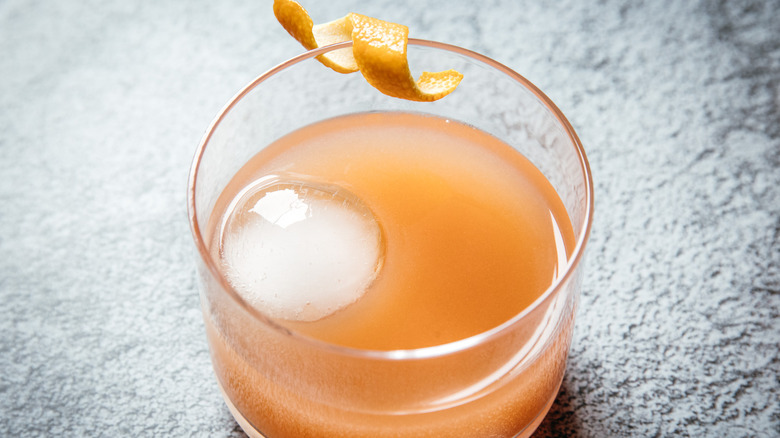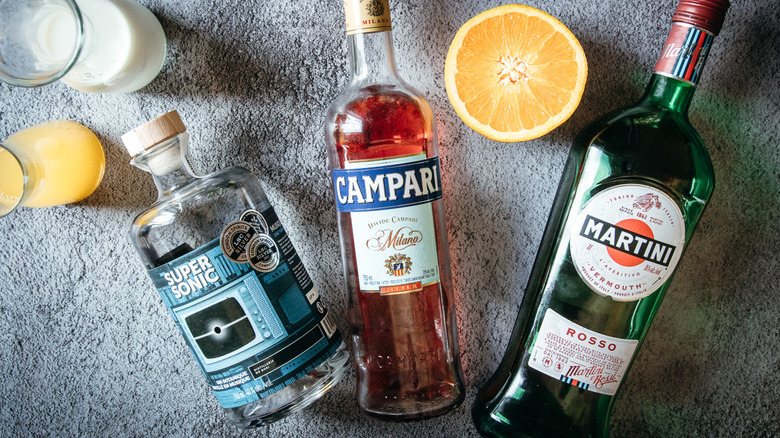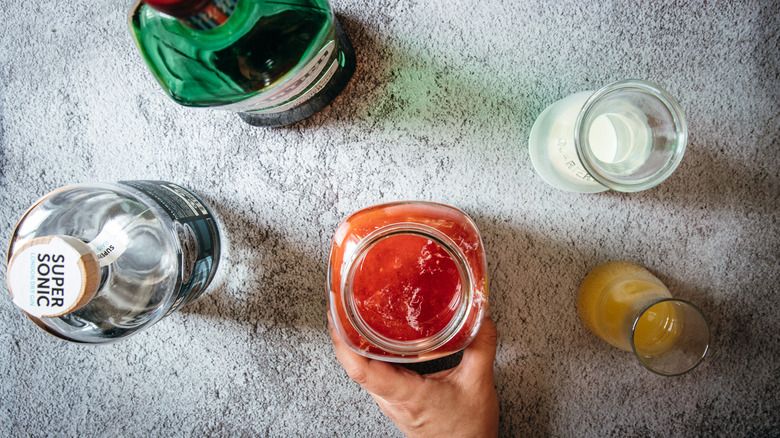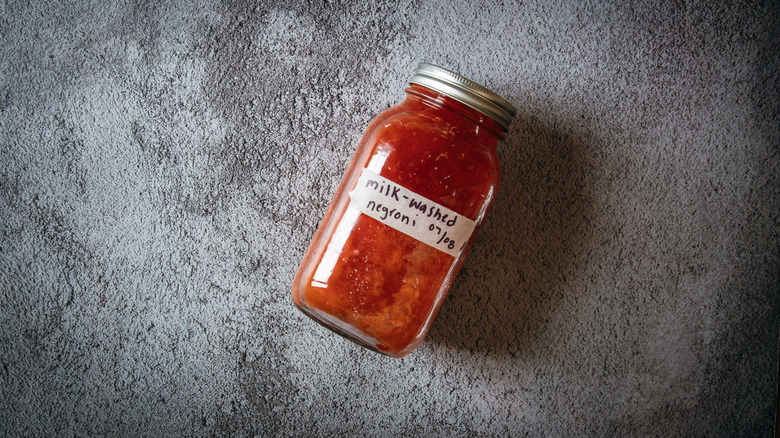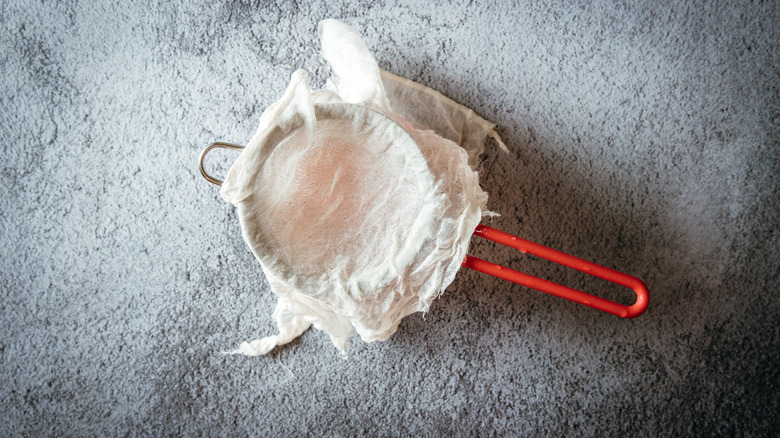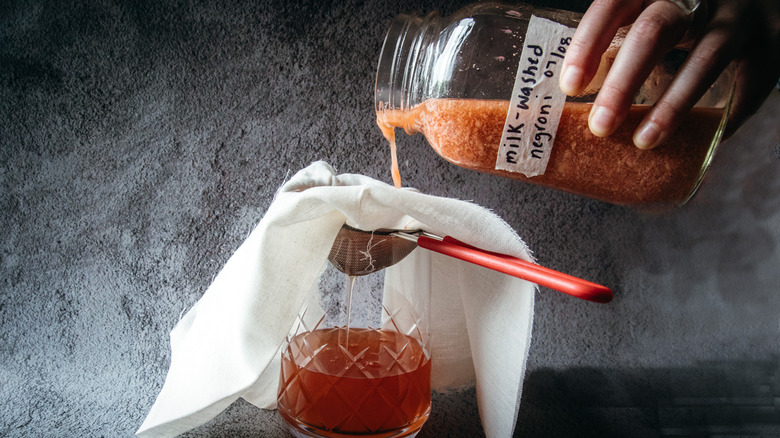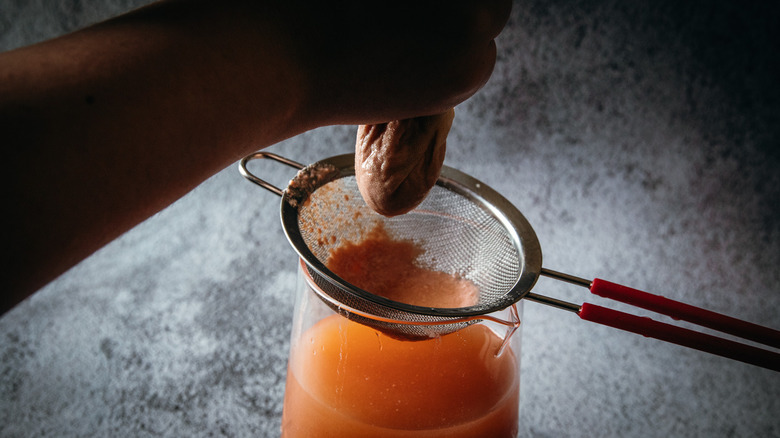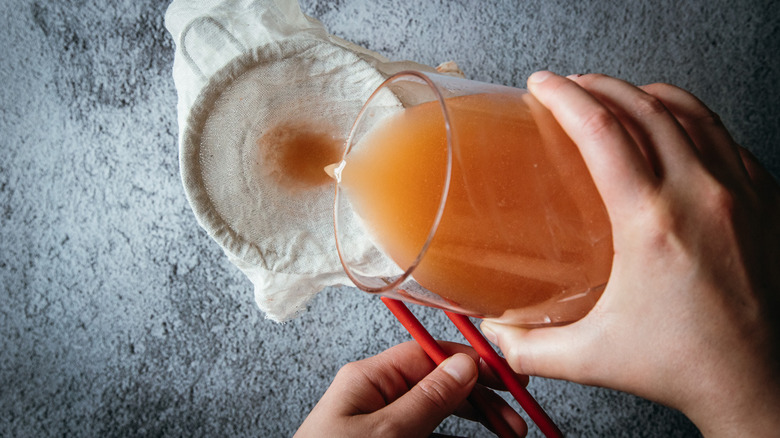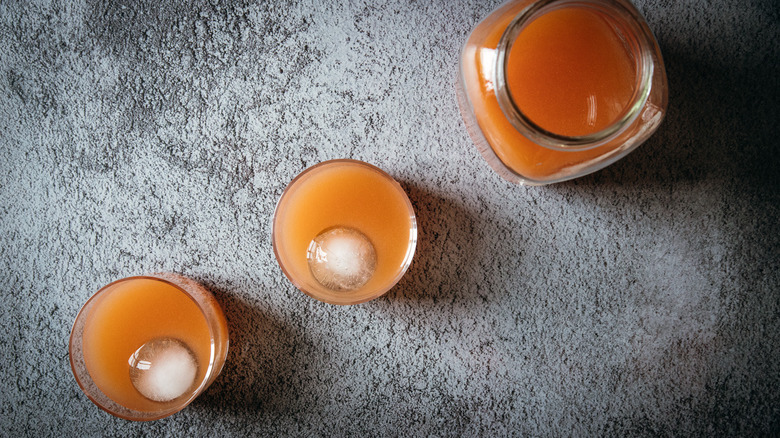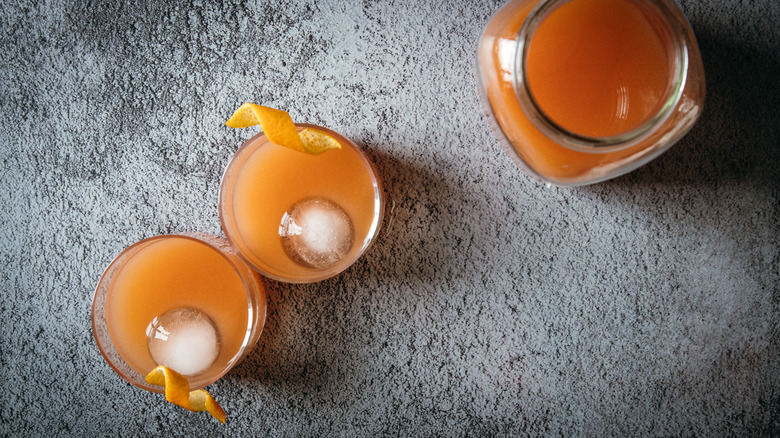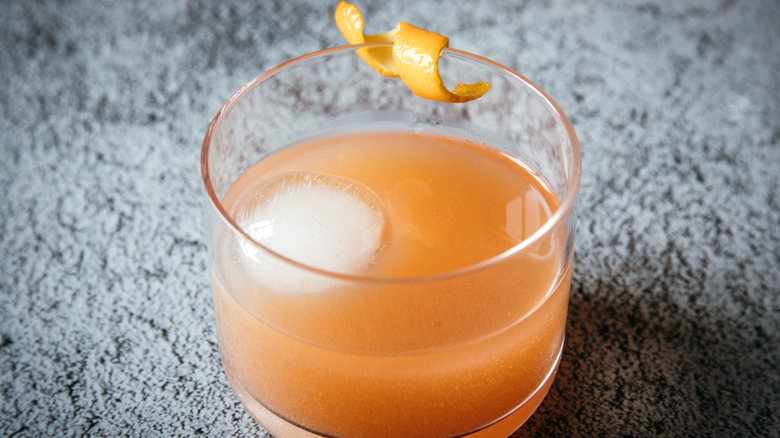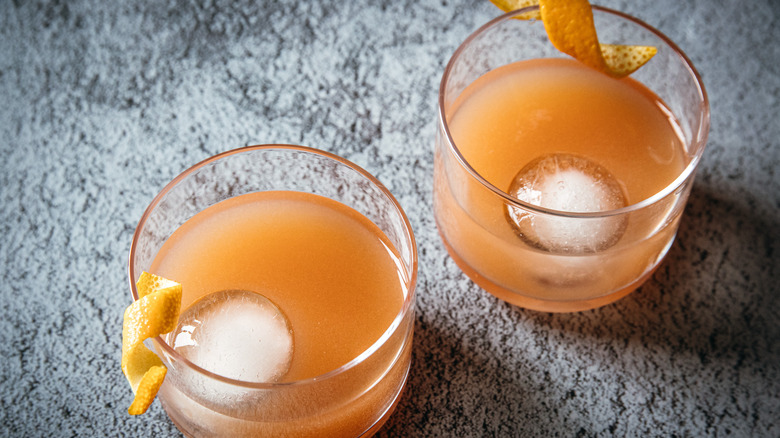Milk-Washed Negroni Recipe
This milk-washed Negroni is a modern twist on a classic cocktail that takes everything you love about the original and makes it bigger, better, and brighter. For a drink that looks like a peach but tastes like grapefruit essence in a glass, look no further than this aperitif.
Milk washing is a bartender's technique that involves mixing the cocktail ingredients with milk and then straining out the curds, resulting in a smoother, silkier texture and a mellower flavor profile. The process softens the bitter edges of the Campari and adds a subtle creaminess to the drink.
According to Ksenia Prints of My Mocktail Forest, milk washing has been gaining popularity among mixologists for its ability to transform classic cocktails into new creations. While the preparation does take some patience, because the mixture needs to be clarified overnight or for a full 24 hours, the result is a sophisticated and intriguing variation of the beloved classic Negroni.
Ingredients for milk-washed Negroni
To create this twist on a Negroni, you'll need a few high-quality spirits and additional ingredients for the milk washing. Start with the traditional Negroni components: gin, Campari, and sweet vermouth. For the milk-washing process, you'll need whole milk and pineapple juice. The garnish is a simple orange twist, so you'll need a fresh orange. You'll also need some non-edible items: a jar for mixing and storing, cheesecloth for straining, and a mesh strainer.
Step 1: Combine the cocktail ingredients in a jar
In a jar, combine the gin, Campari, vermouth, milk, and pineapple juice.
Step 2: Refrigerate overnight
Seal and refrigerate overnight.
Step 3: Line a strainer with cheesecloth
The next day, line a mesh strainer with cheesecloth.
Step 4: Strain the cocktail
Pour the milk-washed mixture through the strainer, allowing the solids to separate.
Step 5: Extract all the liquid
Discard the solids, gently squeezing the cheesecloth to extract all the liquid.
Step 6: Strain a second time
Repeat the straining a second time.
Step 7: Pour into glass over ice
Pour into coupe or rocks glasses over fresh ice.
Step 8: Serve, garnished with an orange twist
Garnish with an orange twist and serve.
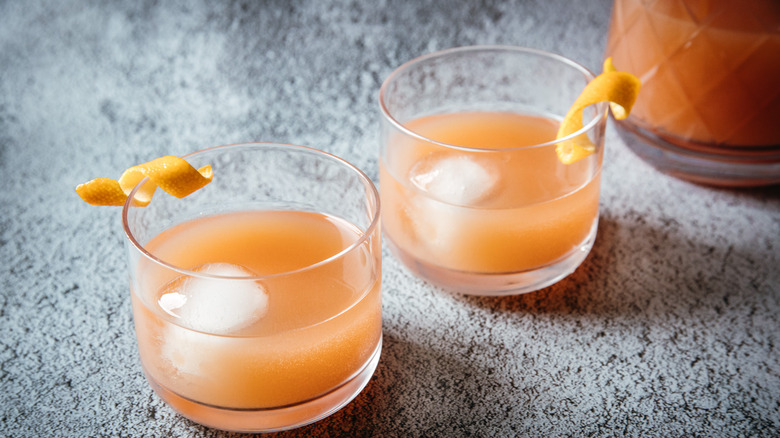
- 1 cup gin
- 1 cup Campari
- 1 cup sweet vermouth
- 1 cup whole milk
- ¼ cup pineapple juice
- Orange twist, for garnish
- In a jar, combine the gin, Campari, vermouth, milk, and pineapple juice.
- Seal and refrigerate overnight.
- The next day, line a mesh strainer with cheesecloth.
- Pour the milk-washed mixture through the strainer, allowing the solids to separate.
- Discard the solids, gently squeezing the cheesecloth to extract all the liquid.
- Repeat the straining a second time.
- Pour into coupe or rocks glasses over fresh ice.
- Garnish with an orange twist and serve.
What is milk washing?
Though it sounds modern, milk washing is actually a very old mixology technique that involves mixing alcohol with milk, allowing it to curdle, and then straining out the solids. This process dates back to the 17th century, when it was used to soften and clarify spirits or cocktails.
The chemical process behind milk washing relies on the interaction between the alcohol and the proteins in milk. When mixed, the alcohol causes the milk proteins to coagulate, forming curds. These curds act like a filter, capturing impurities, tannins, and harsh flavors from the alcohol. As the mixture is strained, the curds are removed, leaving behind a clarified liquid with a refined taste and texture. Beyond taking out the extras, milk washing actually adds several qualities to a drink. It reduces acidity and bitterness, creating a rounder, more balanced flavor. The technique also imparts a subtle creaminess and silky mouthfeel without adding a milky flavor. Visually, milk-washed cocktails often have a clearer appearance than their non-washed counterparts.
This method is particularly popular for transforming bold, assertive spirits into smoother, more approachable versions. It's also commonly used in milk punches, a category of brandy-based cocktails from the 1700s that has seen a revival in recent years. While the process of milk washing does require time and patience, it offers home enthusiasts and mixologists a unique way to reimagine classic recipes and create new, complex flavor profiles without extra tools or expensive ingredients.
How can I customize this milk-washed Negroni?
You can substitute the pineapple juice in this milk-washed Negroni recipe with other acidic fruit juices. The role of the pineapple here is to help curdle the milk, while also adding some very delicate tropical notes. Passionfruit juice is an excellent alternative that can provide a similar tropical note with a unique twist. Its tart and sweet profile complements the bitterness of Campari and the herbal notes of gin and vermouth, creating a complex and balanced flavor. Other potential substitutes include citrus juices like lemon, lime, or grapefruit, which will act similarly to the pineapple juice and can add brightness and acidity to the cocktail.
To further flavor the milk-washed Negroni, you can experiment with various ingredients. Consider using infused spirits, such as gin infused with herbs like rosemary or thyme, or Campari infused with orange peels. Adding a small amount of flavored syrup, like elderflower or lavender, can help sweeten the drink and make it a bit more aromatic. Incorporating aromatic or fruit bitters will help bolster up the drink's mellow pungency, while infusing the mixture with whole spices like star anise, cardamom, or cinnamon stick can add warmth and depth.
What can you do to give this Negroni clarity other than milk washing?
While milk washing is a popular method for clarifying cocktails, there are other techniques you can use to achieve clarity in a Negroni without using milk. One common approach is the use of agar clarification. This process involves mixing the cocktail ingredients with agar, a vegetarian gelatin substitute, and then freezing and thawing the mixture. As it thaws, the clear liquid separates from the solids, resulting in a clarified cocktail.
Another method is the use of a centrifuge, which is becoming increasingly popular in high-end bars. This equipment uses centrifugal force to separate particles based on density, effectively removing solid particles and resulting in a crystal-clear liquid. While this method is highly effective, chances are that you don't have this specialized, expensive equipment just lounging in a cabinet in your kitchen.
For a more accessible option, you can also try the gelatin filtration method. Similar to the agar clarification, this involves adding gelatin to the cocktail mix, allowing it to set, then breaking it up and straining it through cheesecloth. The gelatin traps impurities and particles, leaving behind a clarified liquid. The easiest technique is cold-filtering, which can improve clarity to a lesser extent. By chilling the cocktail ingredients separately and then mixing them, you can reduce the dissolution of certain compounds that can cloud the drink. Follow this with a few rounds of fine straining through multiple layers of cheesecloth or a coffee filter.
